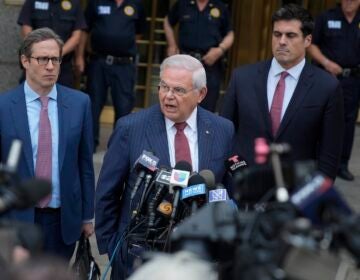Camden schools’ turnaround plan will need public support to have a chance
The statistics are grim in Camden City Schools: according to just-released state data, only 21 percent of children in grades 3-8 can read, write, and do math on grade level, compared with 50 percent of children in similarly impoverished districts. Twenty percent of 11th-grade students pass the state basic skills tests in math and only one out of two students graduates from high school.
Yet Superintendent Paymon Rouhanifard, on the job just more than a year, is hopeful that the district can be transformed after “decades of dysfunction,” primarily because of a new strategic plan that places great emphasis on community collaboration and engagement.
There’s a fair amount of research that backs up this investment in outreach and consensus-building. For example, Yale Professor James Comer’s School Development Program famously relies on community involvement as a linchpin for improving underachieving students and districts.
The Learning First Alliance, a network of leading education organizations, concludes that “the biggest challenge for educational leaders is to nurture engagement and commitment rooted in community.” Tony Wagner, a professor at Harvard University’s new Innovation Lab, writes, “the biggest challenge for educational leaders is to nurture engagement and commitment rooted in community. To create such learning communities requires both new structures and a very different spirit.”
At Monday’s press conference in the library of Octavius V. Catto Family School in East Camden, Rouhanifard highlighted the importance of this approach. He saluted a few small gains over the past year, such as increases in student achievement at Catto School and Harry C. Sharp School in Cramer Hill. However, remarked Rouhanifard, “these [test] scores came up far short of what our children deserve” and “we are coming up short in our most basic obligation to children and families.” He added, “we must confront reality where we’re not seeing progress and come together to make the hard choices our students and families need to make sure every child is put in a position to be successful.”
Much of the ensuing discussion focused on the culled results of a series of meetings — a “one hundred-day listening tour” — where students, parents, residents, and staff members expressed their “hopes and dreams” for this battered city’s school system.
At the press conference, Rouhanifard listed the results of the listening tour in the form of the top three priorities of families, residents, and community leaders:
Students receive rich instruction from their teachers.
Students leave school ready to succeed in the next grade level, college, or career.
Students are challenged and interested in their school work.
These three goals have been converted into a “concrete road map” called The Camden Commitment, the district’s strategic plan. The transformation is bottom-up, not top-down.
It’s illustrative to turn to another downtrodden education system, Newark Public Schools, 88 miles north on the N.J. Turnpike. There, district officials, including State-appointed Superintendent Cami Anderson (Newark, like Camden, is under State control) have failed to garner community support. Instead, systemic changes are regarded as top-down, not reflective of the “hopes and dreams” of residents. Currently, Superintendent Anderson is confronting rebellion from community members, elected representatives, and union leaders. New Mayor Ras Baraka won his seat this year when he turned the election into a referendum on Anderson’s policies. The Newark Teachers Union just went to the State Legislature to complain about the administration’s lack of compliance with new tenure laws. Sen. Ron Rice (D-Essex) is demanding subpoena power to investigate district fiscal issues.
Now, let’s be fair. Newark is not Camden. It’s far larger — about 43,000 students, compared with Camden’s enrollment of about 15,000 — and accordingly more complex. It’s also encumbered by a long history of well-earned community cynicism.
Robert Curvin, in his great book “Inside Newark,” described what happened when the city received a much-touted 2010 Facebook grant of $100 million to jumpstart reform efforts. One of the first steps was the establishment of an organization called PENewark, which “convened scores of meetings throughout the city to hear what citizens expected of school reform.” Sounds like that hundred-day listening tour, right? Not so much. After decades of municipal corruption, community members were so jaded that many regarded the meetings as a way for then-Mayor Cory Booker to gather names of potential donors for future political campaigns. Writes Curvin, “when the public learned that the price tag for the survey was $2 million, and a good share of the money went to political consultants, the project was considered wasteful and a boondoggle for Booker’s friends.” So much for community buy-in.
Camden seeks a different way forward, one that banks on the aspiration that the Camden community will be partners with the district to create schools that meet those basic obligations to children and families. Rouhanifard said on Monday, “I commit to continuing to listen, talk and learn from each of you.” We’ll see what his second year brings.
_______________________________________________
Laura Waters is vice president of the Lawrence Township School Board in Mercer County. She also writes about New Jersey’s public education on her blog NJ Left Behind. Follow her on Twitter @NJLeftbehind.
WHYY is your source for fact-based, in-depth journalism and information. As a nonprofit organization, we rely on financial support from readers like you. Please give today.













